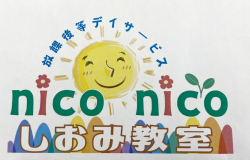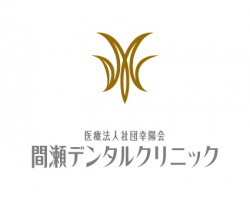Info Type
View Option
Sort by Month
Sort by Category
Back
This text has been translated by auto-translation. There may be a slight difference between the original text and the translation. (Original Language: 日本語)
2022/11/1 - 2022/11/27 / 千葉県 佐倉市 / Seasonal / Occasion

| Venue | 国立歴史民俗博物館 くらしの植物苑 |
|---|---|
| Address | 285-8502 千葉県 佐倉市 城内町117 |
| Date | 2022/11/1 - 2022/11/27 |
| Time | 9:30 minute(s) - 16:30 minute(s) |
- [Time detail]
Admission until 16:00
●Closed: : Mondays ( If it is a holiday, the garden will be open and closed the following day ).
- [Getting here]
・ Take a bus from Keisei Sakura Station to Miyakojimachi or National Museum of Japanese History, and get off at Miyakojimachi or National Museum of Japanese History, and walk about 10 minutes or about 25 minutes.
[By car]
・ 15 min. from Yotsukaido IC or Sakura IC on Higashi-Kanto Expressway, next to Sakura Junior High School
- [Venue detail]
Kurashi-no-Botanical Garden Special Program "Traditional Classic Chrysanthemums
- [Contact]
- 050-5541-8600(ハローダイヤル)
- [Registrant]国立歴史民俗博物館
- [Language]日本語
- [TEL]050-5541-8600
- Posted : 2022/10/06
- Published : 2022/10/06
- Changed : 2022/10/06
- Total View : 703 persons
- Find local business with Town Guide
-
- The only restaurant in eastern Japan whe...

-
Ocean" is a fantastic restaurant where you can dine while watching orcas, the most popular animals at Kamogawa Sea World, right beside you. Inside the restaurant, there is a cafeteria-style restaurant...
(04) 7093-4803レストラン「オーシャン」
-
- We are an English conversation school in...

-
Strong English School celebrated its second anniversary in March 2020 and moved to the easily accessible Minanoba location in July of the same year. From infants to adults, students can choose a les...
(0438) 38-5506STRONG ENGLISH Learning Center
-
- ★ Staff are always welcome ★ It is such ...

-
★ We are always looking for staff ★ If you are looking for after-school day care service/ day-care center visiting support/ temporary daytime support/ consultation support office in Kisarazu City, ple...
(0438) 97-7726放課後等デイサービスあず教室第1第2
-
- Healthy hair is essential for a quality ...

-
Salon for beautiful hair The health of your hair is absolutely essential for a youthful and elegant style. eFFort ( At eFFort ), we will propose "the best hairstyle" for your hair based on the inter...
(0439) 87-5551髪をキレイにするサロン eFFort
-
- We are a studio specializing in personal...

-
It has been 10 years since we opened our first studio specializing in personal training in Kisarazu. Thanks to your support, we have made it to this day. We will continue to support your body accord...
(0438) 97-3925小濱トレーニングジム
-
- Why don't you increase your child's "I c...

-
NICONICO Shionomi Classroom watches over the growth of children with slow developmental progress and supports them in developing social skills. The facility strives to improve self-esteem and self-est...
(0438) 25-8181niconicoしおみ教室
-
- A place where you will want to come and ...

-
Our riding lessons are western style. You can learn the natural and tireless riding style by riding quarter horses, which are mild-mannered and obedient to people. You can use the club for any purpo...
(0439) 67-1168アマハホースクラブ
-
- 5-minute walk from Aobori Station, Futts...

-
At our clinic, we are committed to ensuring that patients themselves have a clear understanding of their overall oral situation. We will make a comprehensive judgment and propose a treatment method b...
(0439) 87-8211間瀬デンタルクリニック
-
- Kikou Densetsu" in Kiyokawa, Kisarazu Ci...

-
Please feel free to contact us for lighting remodeling, air conditioning, additional outlets, antenna installation, etc. ☑ We want to renew a room stylishly. ☑ To brighten up the room and ...
(080) 5372-1000株式会社 輝耕電設
-
- The "Owl Castle," a cafe where you can m...

-
Owl Castle" is a cafe in Kimitsu where you can touch owls. Please visit us in this healing space where you can take pictures with and feed a variety of friendly owls.
(080) 3730-0653楽鳥園/ゴールデンベル/ふくろうの城
-
- If you are looking for support in return...

-
We are a place where you can feel safe and secure, and we will support your return ・ to work. We will realize close support by carefully listening to each person's concerns and hopes so that those who...
(0120) 947-304リワークセンター千葉
-
- A unique cafe that uses blueberries ・ fi...

-
Five minutes by car from the first Kanada Interchange after the Aqualine, Please feel free to relax in our unique cafe that uses blueberries ・ figs ・ vegetables, etc. grown on our own farm to make yo...
(0438) 41-1216果実農園 カインの里
-
- Sushi/Catering "Ougihachi" in Tateyama C...
-
We can accommodate banquets for up to 50 people ! Seasonal menu and fresh sushi with artisan skills ・ Seafood dishes are served. The restaurant is a popular place for banquets, gatherings with family ...
(0470) 22-9148扇八
-
- One of the largest blueberry orchards in...

-
One of the largest blueberry farms in Kanto ・ Ichihara City "Furusato Farm" is one of the largest sightseeing farms in the prefecture, with over 3,000 blueberry plants planted in five fields covering ...
(0436) 78-9909ふるさとファーム
-
- By people's side, for people's sake. K.T...

-
We are committed to making life in the rich natural environment of Minami-Boso richer and more comfortable. We are developing services to meet the diversified lifestyles of our customers. Constructio...
(04) 7092-0900(株)ケイテイエス






It is said that from the middle of the early modern period onward, chrysanthemums became popular, and varied horticultural chrysanthemum beds and chrysanthemum craft fairs became fashionable. The two types of chrysanthemums that supported these fads were the Higo chrysanthemum, with its sparse petals, and the Edo chrysanthemum, with its petals changing after it began to bloom. These, plus the "Choujigiku" which blooms with a raised center, are the traditional mid-flowering varieties and are called "Kikkyo Chrysanthemums".
The Kurashino Botanical Garden has been collecting ・ such "classic chrysanthemums" since 2000. This year's exhibition will feature approximately 120 varieties of classic chrysanthemums with unique characteristics from various regions, as well as 50 varieties of original Saga and Higo chrysanthemums, which were cultivated by seedling cultivation at Rekihaku. This year, under the theme of "Chrysanthemums: Viewing Chrysanthemums in the Edo Period - Ground Planting ・ Cut Flowers ・ Potted Plants -," panels will be displayed introducing the methods of viewing chrysanthemums in the Edo period, namely ground planting, or flowerbed planting, cut flower planting, and potted planting.
●Fare
General : 100 yen
*Entrance is free on November 3 ( Thursdays ・ and holidays ) on "Culture Day.
*Free admission for high school students and younger.
*Free admission for disabled persons and their caregivers upon presentation of a disability certificate.
*General Exhibitions of the Museum ・ Special exhibitions are charged separately.
*Present the museum ticket stub and you can enter the Botanical Garden of Life on the same day.
Show the stub from the Botanical Garden and get a discount for admission to the Museum on the same day.